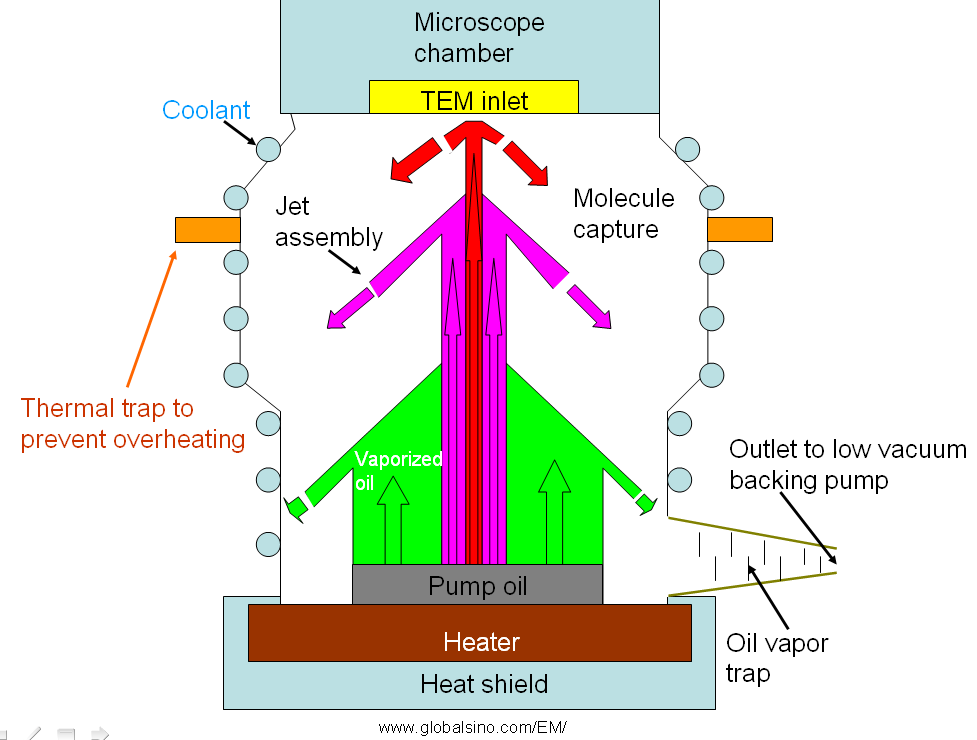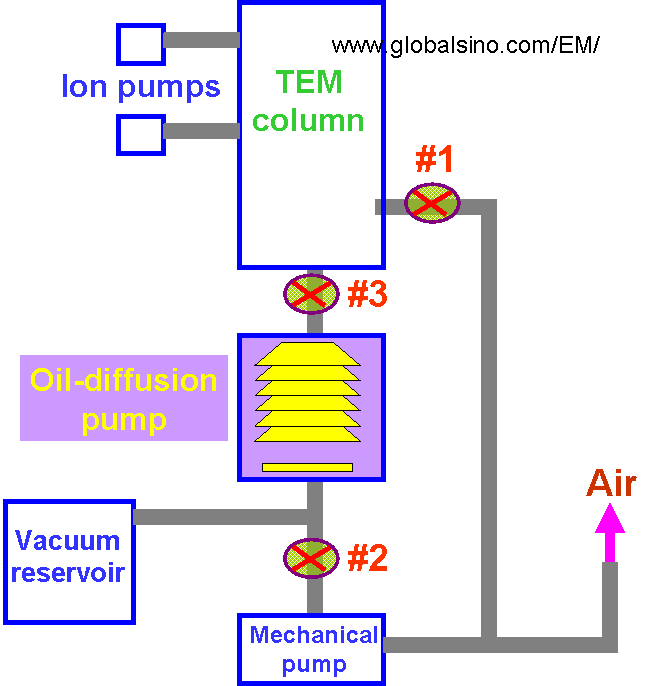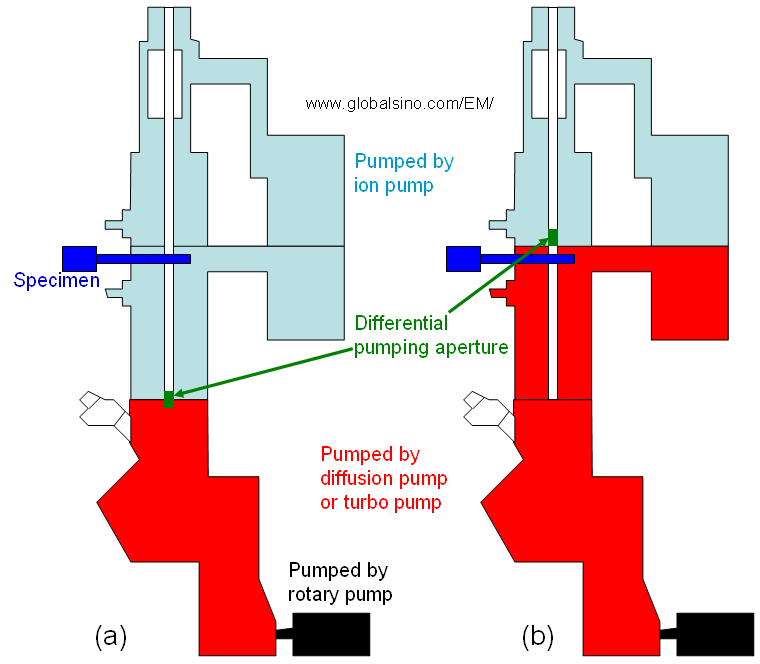=================================================================================
A diffusion pump has a cylindrical metal pumping chamber that is composed of stacked, upside-down funnels. Oil-diffusion pumps use a hot plate to boil oil in combination with a series of concentric vapor jets that drag air molecules out of a microscope. The vapor condenses onto a cold surface as shown in Figure 4321a. Here, these pumps need external water cooling (coolant, water- or oil-cooled via copper tube that wraps around its exterior) to help vapor condensation. At the top, the pump is connected to the microscope chamber that is being evacuated, and near the bottom there is an exhaust port that is connected to the low-vacuum backing pump (e.g. rotary pump) or buffer tank. An electric heating element (heater) boils a small volume of synthetic lubricant (pump oil) near the bottom. In this way, the expansion of the oil vapor creates a pressure to force gas molecules out of the top of the pump down to the base at supersonic speeds. The hot microscopic droplets absorb air molecules along their path so that the condensed oil and the air from the microscope is pulled out from the trap. At the bottom of the pump, the cooled oil is reheated and vaporized again, and releases the trapped air molecules that are removed by the backing pump.
Diffusion pumps normally have liquid-nitrogen (LN2) cold traps near the top of the pump immediately above a water-cooled baffle to prevent vapor (due to overheating) from backfilling into the microscope column. Furthermore, note that losing the cooling water supply and burnout of the hot plate can cause failure.

Figure 4321a. Operation mechanism of diffusion pumps.
These pumps in high vacuum systems, such as TEMs and SEMs, cannot work directly against atmospheric pressure and need a backing pump, e.g. mechanical pre-vacuum pump, in order to function as shown in Figure 4321b, so that they are also called secondary vacuum pumps. The oil-diffusion pumps can reach a vacuum of <10-4 Pa and have high pumping capacity ( >500 l/s ). The oil diffusion pumps are vibration-free, reliable, and less expensive, while they may introduce contamination because of oil vapor. In practice, to reduce specimen contamination, a diffusion pump oil of low vapor pressure should be employed.

Figure 4321b. Schematic illustration of pumping system in TEMs.
Ion pumps are only efficient at high vacuums, so they are usually turned on after a diffusion pump has lowered the pressure to <~10-3 Pa (10-5 Torr). Therefore, diffusion pumps are called high-vacuum, low-volume pumps. The high vacuum produced by diffusion pumps, turbomolecular pumps and ion getter pumps is normally measured by Penning gauges.
In general, the vacuum systems of standard EMs are composed of mechanical pump(s) (rotary pumps, rough pumps, or forepumps), diffusion pump(s), vacuum gauges, switching valves, and a network of connecting pipes.
As shown in Figure 4321c (a), in most modern TEMs, the electron gun, top lenses, and specimen chamber are maintained at ultra-high vacuum by an ion pump, while the viewing screens and photographic chamber are maintained at a lower vacuum, which is referred to as high vacuum, by either a diffusion pump or a turbomolecular pump. This vacuum level is backed by a mechanical (rotary) pump. However, some TEMs have lower vacuum in the specimen chamber as shown in Figure 4321c (b).

Figure 4321c. Vacuum in TEMs: (a) Modern TEMs, and (b) Some TEMs.
|
